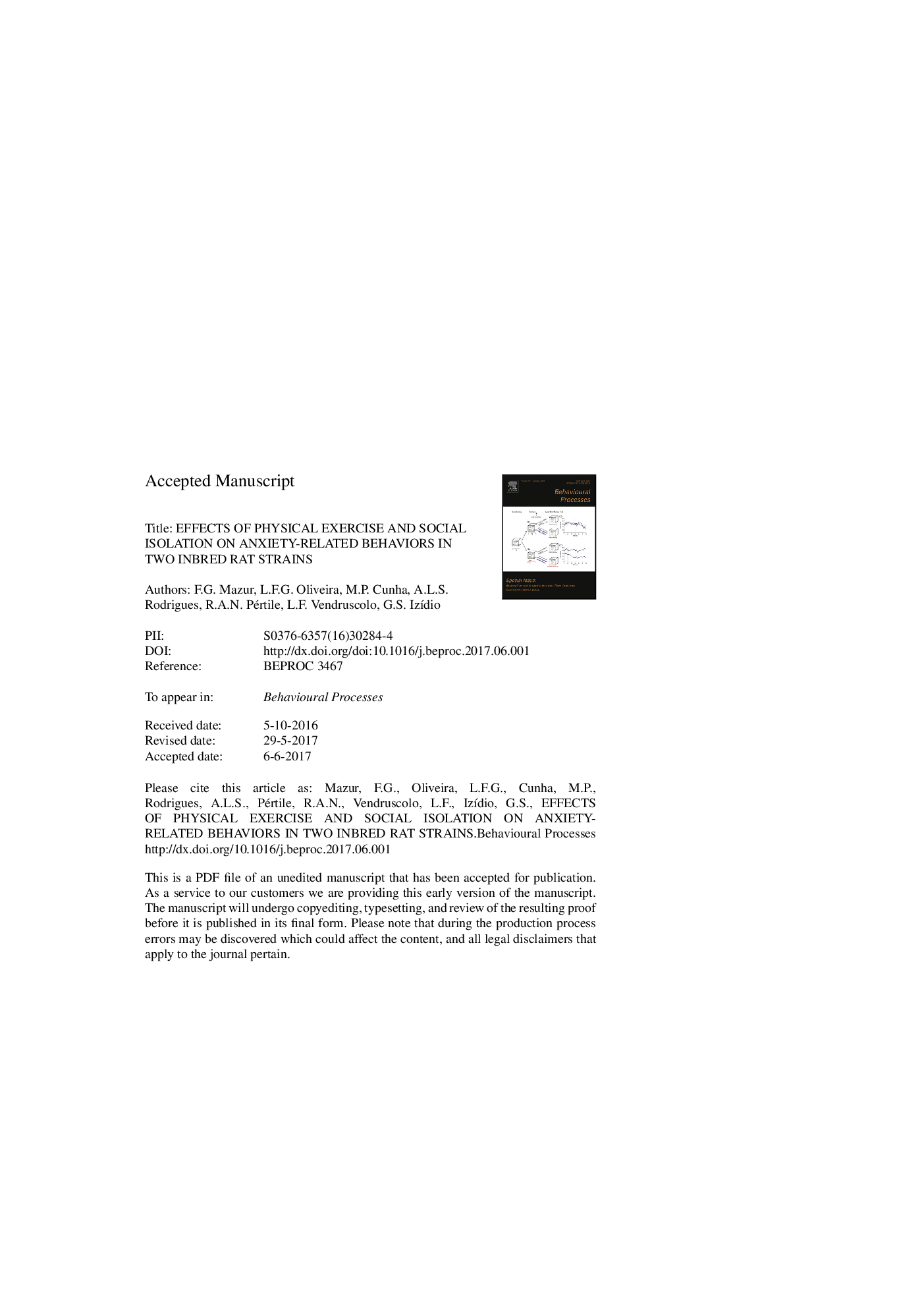| Article ID | Journal | Published Year | Pages | File Type |
|---|---|---|---|---|
| 5539580 | Behavioural Processes | 2017 | 18 Pages |
Abstract
We investigated the effects of physical exercise (PE) on locomotor activity and anxiety-like behavior in Lewis (LEW) and Spontaneously Hypertensive Rats (SHR) male rats. Rats received either four weeks of forced training, 5Â days/week, on a treadmill (experiment 1) or were given 21Â days of free access to running wheels (experiment 2). We also tested the effects of social isolation (SI) (seven days of isolation â experiment 3) on behavior. In experiment 1, 20% of LEW rats and 63% of SHR rats completed the training protocol. PE significantly increased central and peripheral locomotion in the open field (OF) and entries into the open arms in the elevated plus-maze (EPM) in both strains. In experiment 2, the distance traveled by SHR rats on running wheels was significantly higher compared with LEW rats. PE on running wheels also increased the time spent in the center of the OF in SHR rats only. In experiment 3, SI decreased central and peripheral locomotion in the OF in both strains. In summary, forced PE on a treadmill reduced anxiety-like behavior and increased locomotion in male rats of both strains, whereas voluntary PE on running wheels decreased anxiety-like behavior in SHR rats only. SI decreased locomotion in both strains in the OF. This study suggests that spontaneous activity levels are genotype-dependent and the effects of PE depend on the type of exercise performed.
Related Topics
Life Sciences
Agricultural and Biological Sciences
Animal Science and Zoology
Authors
F.G. Mazur, L.F.G. Oliveira, M.P. Cunha, A.L.S. Rodrigues, R.A.N. Pértile, L.F. Vendruscolo, G.S. IzÃdio,
